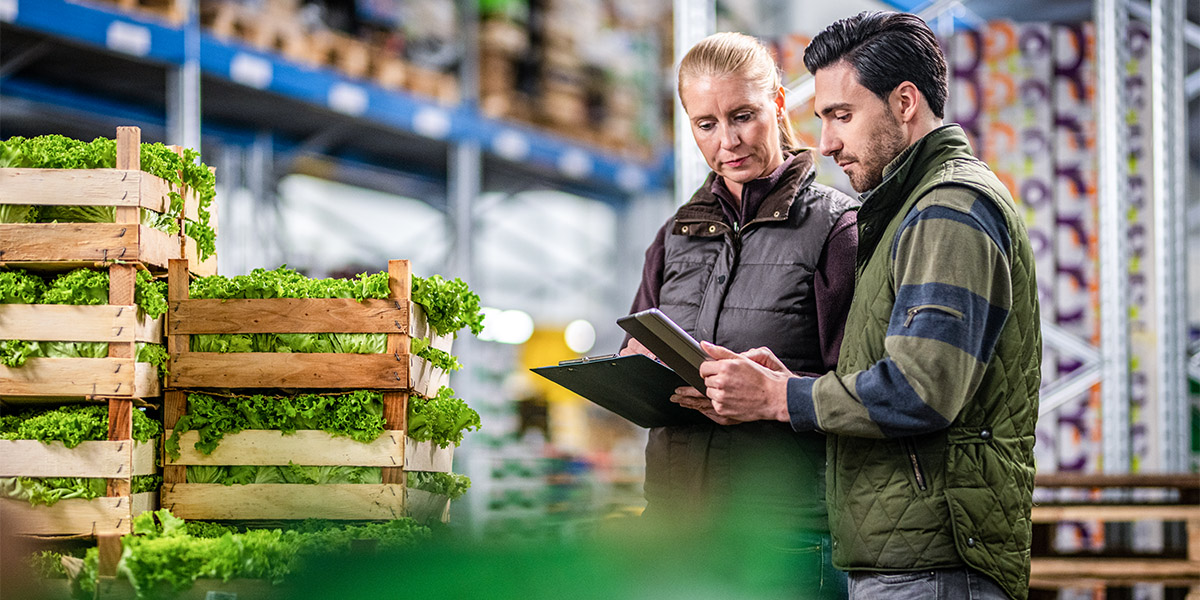Consumers expect to get fresh produce at any time – with an emphasis on “fresh” and “at any time”. The challenge for the industry is to balance product availability and minimization of the cost tied up in inventory without disappointing their customers. Essentially, supply capability and lead time, in addition to price and quality, are factors of increasing importance in the fight for market share.
The optimal inventory
What does this mean for your stocks of non-durable fast-moving consumer goods (FMCG)? Securing ever-shortening lead times implies that companies in the fruit and vegetables business have to opt for higher inventory levels. Yet, excess inventories will cause inventory costs to soar, which has a major impact on liquidity and profitability. Additionally, there is a high risk of waste and write-offs. On the other hand, if your inventory is too tight, you might weaken your company’s production and delivery capabilities, which could result in negative supplier assessments or even being eliminated from your customers’ shortlists.
Clearly, you cannot do without a safety stock of auxiliary and operating materials. But what is needed and how much is needed? Material planning managers use historical consumption data and the procurement lead-time to define the need. When the inventory levels fall below the defined minimum stock, purchase orders with predetermined suppliers can be initiated automatically.
Data-driven material requirements planning
Which figures are used to calculate the minimal or optimal inventory level? CSB’s solution for inventory management uses the details of all relevant goods regarding quality, quantity, price, sell-by date, location, and batch, in any number of locations, inventories, and companies. With material requirements planning based on this data, the items are supplied at the right time, at the right place, in the right amount, ensuring that deadlines are met and that the inventory capacity is economically optimized. The fast evaluation of data enables you to respond instantly to fluctuations in supply and demand. Warehouse operatives can access bin location information at the press of a button so they can locate the products much faster.
Apart from optimizing inventory levels, batch-based inventory management offers the advantage of providing end-to-end batch traceability. If you succeed in supplying all goods while tying up as little capital as possible, you achieve an optimal balance of inventory levels which, in our experience, reduces the cost by up to 30 percent.
Beyond inventory management
For most customers, material requirements planning and inventory management is just one component of their planning. The increasing demand for organic, sustainable products, as well as the natural production conditions made unpredictable by climate change have a major impact on the processes in the fruit and vegetables industry. What we need is increasingly complex and fast planning in order to factor in all these conditions.
Many companies rely on integrated digitalization with a seamless flow of data across the entire production, inventory, and supply chain - precisely adapted to their individual needs. In fact, they organize their entire procurement (including producer clearing and supplier assessment) and they plan and control production and sales (including picking and shipping) in their ERP system. Certainly, with end-to-end quality management and controlling.
The success stories of our customers provide actual proof. For instance, Eisberg AG, a Switzerland-based producer of prepared salads, uses modules for process planning, quality management, traceability and EDI at all of its sites in various countries. The figures are quite impressive: Eisberg AG processes 50 tons of fresh produce every day. The company owns a logistics center with a total storage space of 5,000 square meters as well as a two-story cold-storage warehouse, and it operates its own transport fleet - totally optimized. In short, it really works!

